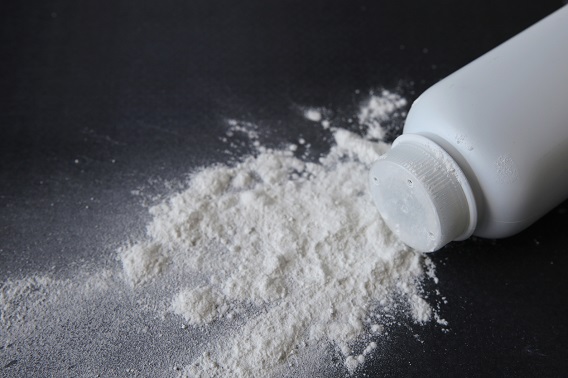World Health Organization Says Talc is “Probably Carcinogenic”
Research & Clinical TrialsWritten by Travis Rodgers | Edited by Amy Edel

The World Health Organization’s International Agency for Research on Cancer finds talc “probably” causes cancer. The key reason for the finding is because the mineral used in products such as cosmetics, talcum powders, children’s toys and even food can be contaminated with asbestos.
The cancer research agency reports there’s “strong mechanistic evidence” the mineral can show “key characteristics of carcinogens in human primary cells and experimental systems” and there’s “limited evidence” talc can cause ovarian cancer in humans. According to “sufficient evidence,” talc is linked to cancer in experimental animals.
These findings support the results of the National Institutes of Health’s study released in May 2024. The NIH’s study involved more than 50,000 women and found the risk of ovarian cancer is higher for people who used talc-based powder frequently or over long periods of time.
“There were numerous studies that consistently showed an increase in the incidence of ovarian cancer in humans self-reporting the use of body powder in the perineal region,” the IARC report stated. “Although the evaluation focused on talc not containing asbestos, contamination of talc with asbestos could not be excluded in most of the studies of exposed humans.”
IARC Talc Classification Is the Second Highest Level of Certainty
After evaluating the evidence, the IARC classified talc Group 2A, explaining “The Group 2A classification is the second highest level of certainty that a substance can cause cancer.” The organization noted, “There were numerous studies that consistently showed an increase in the incidence of ovarian cancer in humans self-reporting the use of body powder in the perineal region.”
The organization acknowledged in its findings that “biases in how talc use was reported in the epidemiological studies could not be ruled out with reasonable confidence.” As a result the IARC noted, “a causal role for talc could not be fully established.”
Following the release of the IARC report, the American Cancer Society suggests, “Until more information is available, people who are concerned about possible links between talcum powder and cancer may choose to avoid or limit their use of consumer products that contain it.”
Health Reports Come as J&J Faces 61,000 Talc Lawsuits
The IARC’s new report comes as Johnson & Johnson faces more than 60,000 lawsuits claiming its talc-based products caused ovarian cancer and mesothelioma. According to court documents, J&J was aware its talc-based products were contaminated with asbestos as early as the 1950s. The company ended sales of its talc products in 2023.
The report also comes a month after Johnson & Johnson agreed to pay $700 million to settle an investigation surrounding marketing practices of the company’s talc-based products. The settlement addresses allegations the company deceived consumers into believing its talc products, such as Johnson’s Baby Powder and Johnson & Johnson’s Shower to Shower, were safe.
In May 2024, the company also proposed a $6.475 billion settlement to resolve all current and future claims that its talc-based products caused ovarian cancer. If approved, it would settle 99.75% of the remaining talc lawsuits the company faces nationwide. The deadline for a final vote is set for July 26, 2024. Talc has been used in baby powder, cosmetics, skincare products and deodorant since the 1800s. Talc is easily contaminated with asbestos since both minerals form close together in the earth. Asbestos is the primary cause of mesothelioma and several other asbestos-related diseases.







